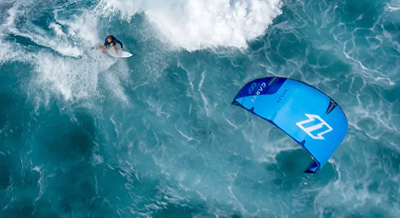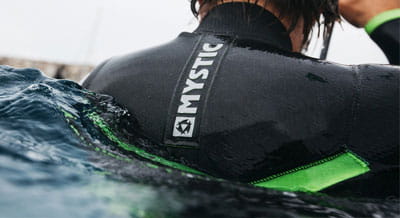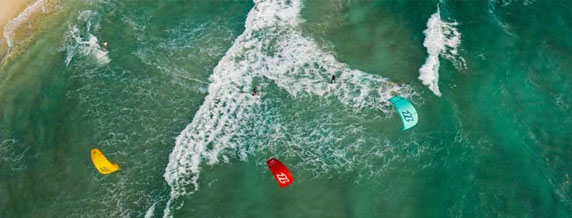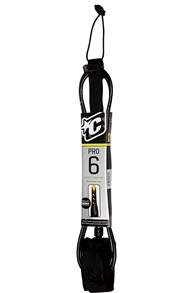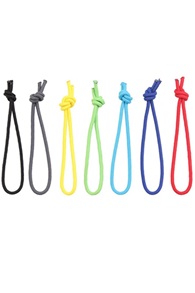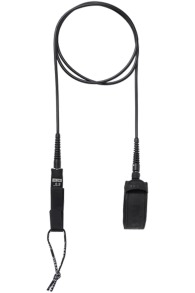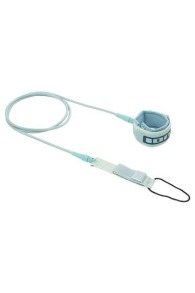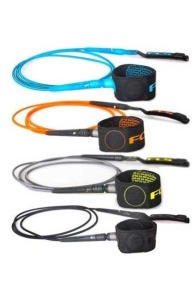Surfboard Leash
Board leashes are not commonly used in kitesurfing because they come with certain risks. Unlike surfing, you can’t protect your head with your hands when you fall, as your hands must stay on the bar. However, some riders use a board leash when kiting near reefs, since a kiteboard on the rocks is far from ideal. We only recommend a leash for advanced riders who know exactly what they’re doing. Using a helmet and impact vest is strongly advised when riding with a board leash. Want to learn more about board leashes? Read more below ».
-19 - -9 from 11
Products per pageSurfboard Leash
Board leashes are not commonly used in kitesurfing because they come with certain risks. Unlike surfing, you can’t protect your head with your hands when you fall, as your hands must stay on the bar. However, some riders use a board leash when kiting near reefs, since a kiteboard on the rocks is far from ideal. We only recommend a leash for advanced riders who know exactly what they’re doing. Using a helmet and impact vest is strongly advised when riding with a board leash. Want to learn more about board leashes? Read more below ».
Board Leashes at Kitemana
In the information section below, you’ll find everything you need to know about board leashes , how to use them, what to look for when choosing the right length or attachment, and when it’s smart (or not) to wear one. We explain the advantages, safety features, and maintenance tips step by step, so you can decide what suits your level and riding style. The better your gear is matched to your needs, the more you can focus on what really matters: enjoying your session on the water.
Most Frequently Asked Questions about Board Leashes:
Is it safe to use a board leash?
A board leash can be useful, but it’s not always safe. The key is knowing when and how to use it. An incorrect setup or a leash that’s too short can become dangerous if you’re launched forward by your kite, the board can rebound toward you like a slingshot. It’s also risky in waves, where you can get rolled around while your board gets pulled behind you. That’s why we only recommend a kiteboard leash for specific situations, such as reef spots where losing your board isn’t an option, or in strong currents. Always use a leash with a helmet and impact vest. If your board hits you, at least you have protection. With proper preparation and safety gear, you can use a leash safely and keep your board close.
How do I attach a board leash to my kiteboard?
Attach your board leash using the leash plug, the small eyelet built into the board for this purpose. Use the included cord or loop to secure the leash firmly, and check that all connections are tight to prevent it from coming loose while riding.
Always use a leash designed specifically for kitesurfing. SUP or surf leashes may look similar, but they aren’t built to handle kite forces and can be dangerous. Their recommended lengths also differ. Rinse your leash with fresh water after every session and regularly check the cord, plug, and attachment for wear or damage. This keeps your leash safe and ready for every session.
What’s the difference between a coiled, roll, and straight leash?
The main difference lies in shape, stretch, and usage. A coiled leash is spiral-shaped and stretches smoothly when you move away from your board. It usually stays above the water, creating less drag and reducing the chance of tangling around your feet or board, ideal for twin tip riders who like to keep their board close. A roll leash is similar but retracts even more smoothly using a roll mechanism attached to your harness, offering greater freedom of movement and comfort during long sessions. A straight leash has no stretch and is mostly used with surfboards or directionals, where you want to keep more distance between you and your board.
Always pay attention to leash length, it should match your board size. For example, with a 5-foot directional, choose a 5-foot leash. A longer leash creates more drag in the water, reducing speed and control, while a shorter leash increases recoil risk, which can be dangerous. The right length gives you the perfect balance between freedom, safety, and performance on the water. If in doubt, go slightly longer, safety first!
Which board leash brands does Kitemana sell?
Duotone Kiteboarding: TRUE KITEBOARDING.
Flysurfer: AHEAD OF ITS TIME
ION: CHALLENGING YOURSELF, EXPERIENCING NATURE, AND FEELING ITS FORCE
Mystic: PUSH THE EVOLUTION OF WATER SPORTS TOGETHER
You have no product(s) in you basket.
Weet je niet waar je moet beginner?
Contact our customer service for advice

